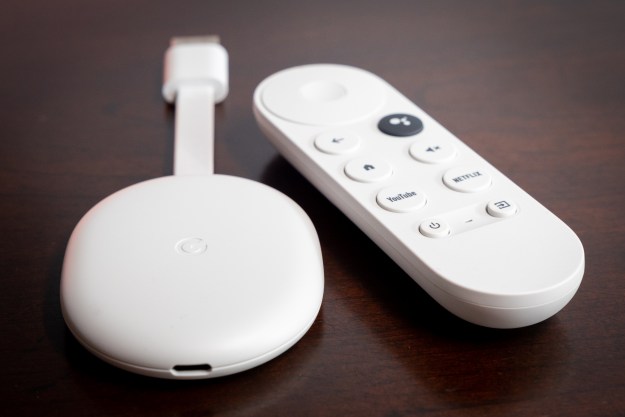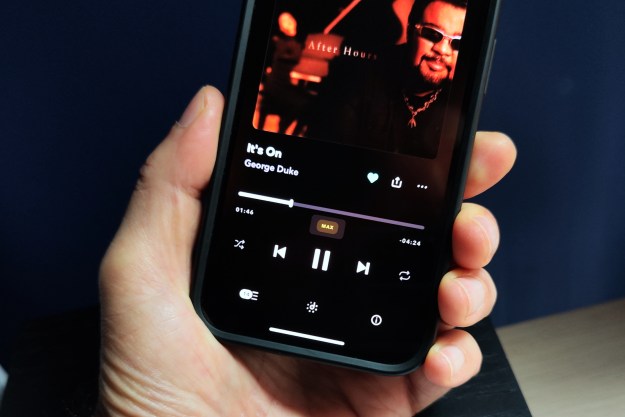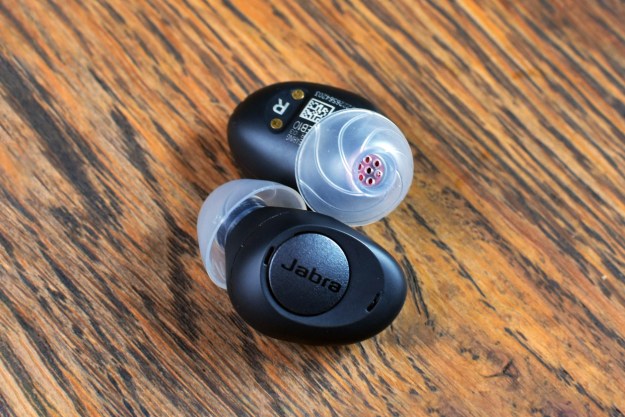
- Very small size
- Comfortable
- Rechargeable
- Good battery life
- Clear audio quality
- Bluetooth-enabled
- Only work with select iPhones
- Can cause the occlusion effect
- Won't last all day
- Only available through audiologists
Jabra’s Enhance Plus wireless earbuds, self-programmable devices intended for people with mild to moderate hearing loss, were announced in 2021. Jabra’s sister companies include major hearing aid brands like Beltone and ReSound, so there was reason to be optimistic. Could people really get the performance and sound quality of traditional hearing aids, which normally cost thousands, for only $800? I tested them to find out.
Design

The Jabra Enhance Plus are quite small, even for a pair of earbuds. According to Jabra, they’re 40% smaller than Jabra’s Elite 7 Pro. There are two color options, dark gray and gold beige. The part that sits in the ear canal has a soft, flexible cover called an EarGel. The Enhance Plus come with medium-sized EarGels fitted, and the box includes EarGels in two additional sizes.
To insert the Enhance Plus, you place the earbud in your ear and twist downward. The EarGel will sit just inside the ear canal, creating a snug but comfortable, seal. They’re comfortable enough to wear for the full 10 hours of battery life. The charging cable is quite short, but the case holds about 30 hours of charge, so you’ll only need to plug it in every few days.
The earbuds are primarily controlled through the Jabra Enhance smartphone app (iOS only), but each earbud also has its own physical control button. The button on the left earbud can lower volume or mute the microphone. On the right side, the button raises volume and answers or rejects calls.
Setup

The Enhance Plus are only compatible with select Apple iPhone models (sorry Android users), and if you want full functionality (including hands-free calls), you’ll need an iPhone 11 or newer running iOS 15.1 or later. Check Jabra’s support site for the full list of compatible iPhone models.
The earbuds can be paired through the app, but that didn’t work any of the three times I tried. I had to pair them in the Hearing Devices menu in the Accessibility settings. It’s not difficult, but it’s worth mentioning because if you’re used to pairing regular wireless earbuds, you might not realize that made-for-iPhone hearing aids are controlled through a separate menu.
The Bluetooth was actually better than my traditional hearing aid.
Once the earbuds are paired, you’ll need to program the hearing aids by running Personalization. During Personalization, the app plays a series of tones at different pitches and volumes. Whenever you hear the sound, you tap the screen. Your “baseline personalization profile” will be programmed into the earbuds based on which sounds you can hear. Afterward, the app has you listen to a recording of a conversation in a busy restaurant. You can choose Normal to keep your baseline programming, Clear to increase the treble frequencies and reduce the bass, or Full to increase bass frequencies and reduce the treble. The setup and programming only takes a few minutes.
Programs for every environment

Like most hearing aids, the Jabra Enhance Plus have listening modes for different situations. Adaptive mode works automatically, enhancing certain sounds and filtering out others based on what it thinks you need to hear. Focus mode filters out background noise and uses the directional microphones to focus on nearby sounds, like the person you’re talking to. Surround mode amplifies ambient sound, making it a nice choice for taking walks or working in bustling public areas.
All three modes were useful. I used Surround while walking around the neighborhood or driving. It was nice to hear the birds, as well as approaching vehicles or people biking past. I could enjoy the walk and hear everything I needed to remain safe.
I could hear everything: Squirrels rummaging around in leaves, birds singing, my shoes scuffing the ground.
When my spouse went along for a dog walk, listening to his voice over all the other sounds was overwhelming. That’s when I used Focus mode. I could still hear the background noise, but his voice was amplified above other sounds. I didn’t have the opportunity to test Focus mode at noisy parties or restaurants, though.

I mostly stuck with Adaptive mode. It has a nice blend of amplification. I can clearly hear whatever I’m listening to while I’m watching TV or working, but I don’t miss sounds like the dishwasher cycle ending or the front door closing.
Sound quality
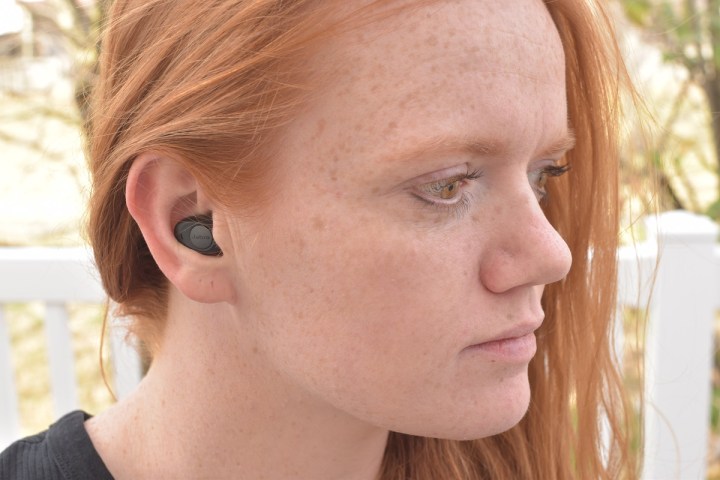
The Enhance Plus are Bluetooth-enabled, so they can be used just like any other Bluetooth headset. The Bluetooth was actually better than my traditional hearing aid. Sometimes my hearing aid can’t maintain a good connection with my phone even if it’s just in my back pocket, but the Enhance Plus maintained a strong connection.
Jabra Enhance Plus has excellent sound quality, even when compared with my traditional hearing aid. Most of the time, everything sounded clear without any effort on my part. When sounds were a bit muddy, I could fix that by turning the volume up a little. There was never even a hint of tinniness.
I rarely listen to music through my traditional hearing aid, because it just sounds a bit flat. Music sounded great through the Enhance Plus, though. I didn’t realize how many details I’d been missing in some of my recent favorites, like Parannoul’s White Ceiling. Orchestral music was a joy to listen to as well — nothing nerdy, just the K-Pop Orchestral Ensemble.
Finding audiobooks and podcasts that I can understand through one hearing aid is a real struggle. Some voices just blend into indecipherable babble. Surprisingly, I didn’t have this problem with the Enhance Plus earbuds. Whether I listened through both earbuds or just my deaf ear, I had no problem keeping up.
It was the same with phone calls. I tested by listening through both earphones, then removing the right one. When I took the right earbud out, of course everything was quieter, but I didn’t need to tweak settings or increase the volume at all. I could easily understand the entire conversation. My good ear wasn’t covering up for bad performance — the Jabra Enhance Plus are just that good.
Unlike traditional hearing aids, Jabra Enhance Plus aren’t suitable for all-day use.
My one complaint is occlusion. The occlusion effect is the sensation that you can hear every sound you’re making. It’s pretty overwhelming to hear the echoey sound of my own voice and the sound of my jaw moving. When I wore both hearing aids, I could even hear my own heartbeat. I had this problem with all different EarGel sizes, so it seems like a byproduct of the design. It’s not unique to the Jabra Enhance Plus — it can happen any time an earbud or other object blocks the ear canal — but it could be a barrier to getting people to wear their hearing aids as often as they should.
Can they replace hearing aids?
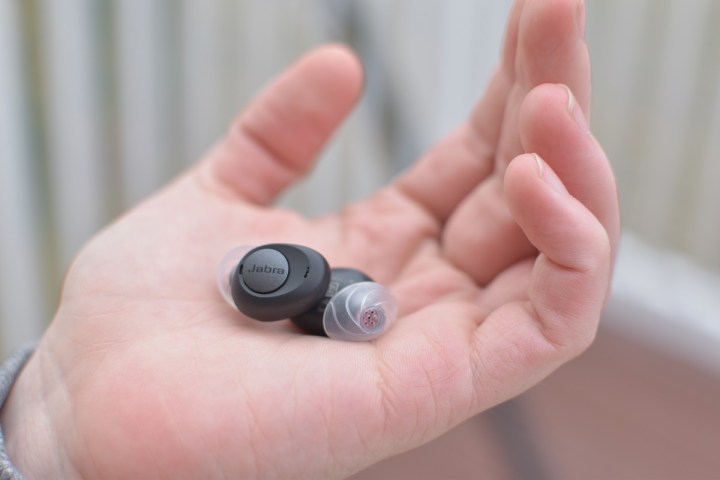
If they’re so great, why not use them instead of my traditional hearing aid? Unlike traditional hearing aids, the Jabra Enhance Plus aren’t suitable for all-day use. They’re intended for situational use, like restaurants and nature walks. Ten hours might seem like enough battery life to last an entire day, but that’s not the case. Hearing aids should be worn from when you wake up to when you go to sleep. Otherwise, neural pathways will degrade, your hearing can actually become worse, and you may be at more risk for Alzheimer’s disease and other forms of dementia.
These hearing aids might be illuminating for people, allowing them to hear sounds they didn’t realize they’d been missing. I could hear everything: Squirrels rummaging around in leaves, birds singing, and my shoes scuffing the ground. Ideally, people will transition to traditional hearing aids when they can. If not, they’ll still have clearer conversations, but they won’t enjoy the benefits of long-term, daily hearing aid use.

Jabra Enhance Plus can’t replace a traditional hearing aid, but you have to go to an audiologist to get them. There are many direct-to-consumer hearing aids on the market, so why not make Enhance Plus available online? Why make customers jump through this hoop?
This choice makes sense when you’re familiar with problems common to the hearing aid market, as Jabra clearly is. It’s difficult to adapt to hearing aids even with the help of an audiologist. Without the support of an audiologist, unhappy customers will just return the device. Direct-to-consumer brand Eargo had a return rate of 26% in 2020, according to its most recent annual filing.
Unsatisfied customers return devices, tell their friends, and leave bad reviews. When it comes to a product that’s meant to be replaced every few years for the rest of your life, that amounts to a lot of lost revenue.
A product doesn’t have to be bad to leave customers unsatisfied. The Enhance Plus are intended for people with “perceived mild to moderate hearing loss,” but it’s difficult for people to accurately assess their hearing loss. People who think they have mild hearing loss may actually have hearing loss so severe that the Jabra Enhance Plus can’t help them. Maybe Jabra could sell more hearables by moving to a direct-to-consumer model, but by making customers jump through an extra hoop, it ensures that people who do buy them are happy customers.
Our take
Jabra Enhance Plus is a great product for people who aren’t sure if they’re ready for hearing aids, but know they need a bit of help. They’re substantially cheaper than most hearing aids, but Jabra didn’t sacrifice sound quality to keep the price low.
Is there a better alternative?
A less-expensive alternative are the Nuheara IQbuds2 Max. They have many of the same features we like in the Jabra Enhance Plus, like great sound quality and hours of battery life. They’re also intended to help those with mild hearing loss, and you don’t even have to go to an audiologist to buy them. However, they’re much bigger, less comfortable for longer wearing sessions, and their batteries will need more frequent recharging.
How long will it last?
According to the manual, the expected service life of the Enhance Plus earbuds, including their batteries, is twoyears. However, this should be considered a minimum, based on heavy daily use. “We expect the actual use life to be much extended from that, like is normal for any set of Jabra earbuds, a Jabra spokesperson told Digital Trends. “Full life is dependent on how much you use them and under which conditions.” The earbuds have an IP52 rating, so they’re able to withstand a bit of dust and water. The one-year limited warranty also covers replacement earbuds in case one gets lost.
Should you buy it?
Yes, the Jabra Enhance Plus are worth buying. If you need help hearing, they’ll make difficult listening environments a lot more accessible and enjoyable.
Editors' Recommendations
- Best over-the-counter hearing aids for 2024
- JLab’s new earbuds are smaller than a dime, and it says $99 hearing aids are on the way
- Olive Max provides low-cost alternative to hearing aids
- Are Technics’ hi-res EAH-A800 the Sony XM4 alternative you’ve been waiting for?
- Jabra’s Elite 2 budget earbuds are real, but you can’t buy them yet




